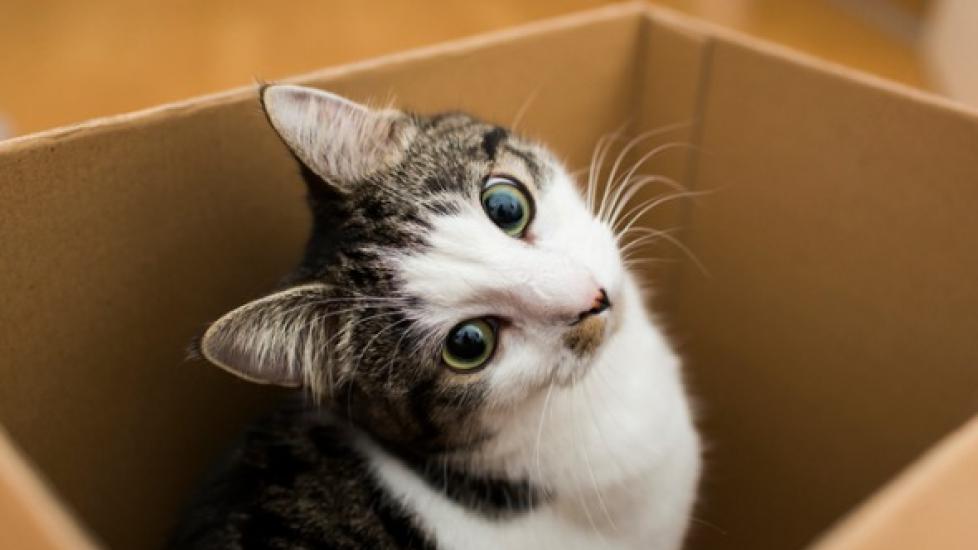What Is the FVRCP Cat Vaccine?
Your cat’s vaccination reminder comes in the mail with a confusing array of letters—what the heck is an FVRCP vaccine? My cat doesn’t go outside, so why does she need it? You toss it aside as you sort through the rest of the mail, but it still nags at you.
Is this something important? Why would your veterinarian send a reminder if your kitty didn’t need it?
Well, the FVRCP vaccine is an important part of your cat’s core vaccine protocols. Here’s what you need to know about this vaccine and how it helps keep your cat protected from some serious diseases.
What Does FVRCP Stand For?
The FVRCP is a combination vaccination, which means that it protects against more than one disease—similar to the DHPP vaccine for dogs.
Here is a breakdown of the diseases covered by the FVRCP vaccine.
Feline Viral Rhinotracheitis
The “FVR” refers to feline viral rhinotracheitis (feline herpesvirus 1 or FHV-1). This disease can lead to a severe upper respiratory tract disease (including rhinitis, sneezing and conjunctivitis). Other less common symptoms include oral ulceration and primary pneumonia.
Similar to people with cold sores, the virus can lay dormant in cats until they are stressed, which causes a flare-up of symptoms.
The real risk of FHV-1 is that it impairs a cat’s pulmonary defense mechanisms, which leaves them susceptible to secondary bacterial pneumonia or to a coinfection with feline calicivirus.
Feline Calicivirus
The “C” in FVRCP stands for calicivirus (feline calicivirus or FCV). Similar to FHV-1, feline calicivirus typically causes upper respiratory tract disease and oral ulceration. It can also cause chronic stomatitis, pneumonia, systemic disease or lameness.
Occasionally, a more severe strain—virulent systemic feline calicivirus (VS-FCV)—can travel through a population, which can result in more debilitating symptoms as well as infection of the internal organs. This more severe strain is frequently fatal.
Feline Panleukopenia
Finally, the “P” stands for panleukopenia (feline panleukopenia or feline distemper or FPV). FPV is highly contagious and has a high mortality rate. It causes anorexia, vomiting, fever and severe diarrhea.
The virus also attacks the bone marrow and lymph nodes, which leads to a very low white blood cell count and prevents the cat from being able to activate their immune system normally.
Why Is the FVRCP Vaccine Considered a Core Vaccine for Cats?
Core vaccines for cats are those that are strongly recommended to be administered to ALL cats—even for cats that don’t go outside. The FVRCP vaccine is one of two core cat vaccines—the other being the rabies vaccine.
The World Small Animal Veterinary Association says, “Core vaccines protect animals from severe, life-threatening diseases that have global distributions.” All three of the viruses that the FVRCP vaccine protects against are widespread and have the potential to be fatal.
All three viruses are also highly contagious. FVR and FCV are spread through sneezes, saliva or eye secretions, but can also be transferred through the environment.
FPV can also be spread through the same bodily fluids, but is predominantly spread through contact with contaminated feces—similar to parvovirus. The virus can live for up to a year in the environment on things like bedding, food bowls, litter boxes, cages, clothing, etc.
This means that your cat does NOT have to come into contact with an infected cat to become ill—they just need to be exposed to something contaminated with the virus.
How Often Should My Cat Receive the FVRCP Vaccine?
The FVRCP vaccine for cats is generally given to kittens every three to four weeks until they are 16-20 weeks old.
The series of vaccines is necessary because it takes a number of “booster shots” to convince the immune system to recognize the components of the vaccine. The series also helps ensure that the vaccine starts working in kittens when the immunity from their mother’s milk wears off.
After 16 weeks of age, the kitten should get a final booster after one year. Then the vaccine only needs to be given every three years. While the kitten series is a bit intensive, once the protection has developed, it becomes much easier to maintain an adult cat’s vaccination schedule.
Does the FVRCP Have Any Side Effects?
Side effects of the FVRCP vaccine for cats are generally quite minimal.
Some kitties will develop a low-grade fever, have a decreased appetite or feel a little sluggish. There may also be a little swelling at the site of the vaccine administration.
These signs almost always go away within a few days.
Rarely, cats will have a more significant allergic reaction to the vaccine, which generally happens within a few minutes to a few hours of receiving the vaccine. In these cases, cats may develop hives, redness/swelling around the eyes and lips, or a mild fever. Other symptoms include vomiting, diarrhea and itchiness.
If you suspect an allergic reaction to the vaccination, contact your veterinarian right away.
Any swelling that remains at the vaccine site for more than three weeks should be checked by your veterinarian. Reactions to vaccines are very rare, and the vast majority are also mild and resolve without any treatment.
How Much Does the FVRCP Cat Vaccine Cost?
There are quite a few different brands of FVRCP vaccine for cats on the market, so the cost charged by your veterinarian will largely depend on the brand they have chosen to use. Typically, the FVRCP vaccine will cost 30-60 dollars.
Your veterinarian’s office can clarify how much the vaccine will cost and whether your veterinarian is currently using an adjuvanted or non-adjuvanted vaccine. Adjuvants are added to the vaccine to help stimulate the immune system. As a rule, for cats, non-adjuvanted vaccines are preferred, but they will be more expensive.
By: Dr. Sandra Mitchell, DVM
Featured Image: iStock.com/kmsh
Related Video: Which Vaccines Does My Pet Need?
